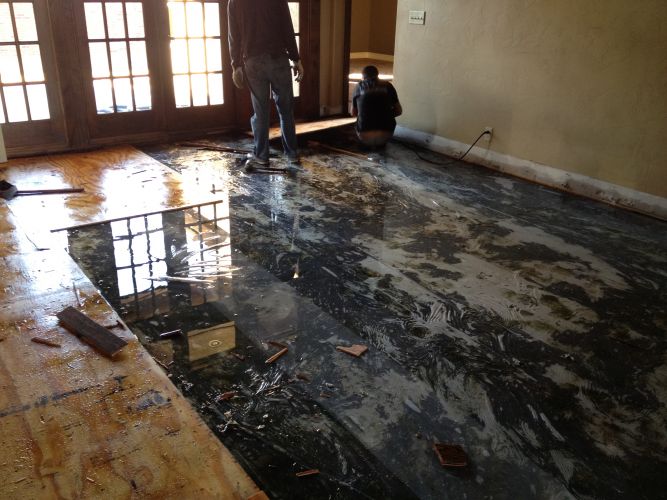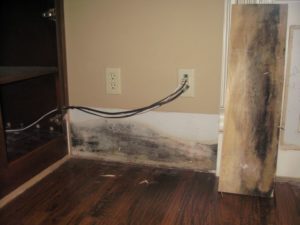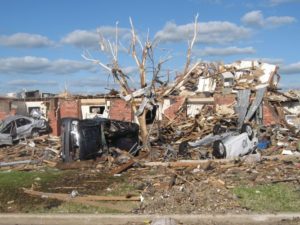What happens when your home is suddenly flooded? Flooding can happen without warning, bringing big challenges. So, how do you get water out of a flooded house?
The first step is to find and stop the water source quickly. Then, use the right methods to remove the water, based on how bad the flood is. This step is key to avoid damage and mold.
Mold can grow fast, in just 24 to 48 hours. So, acting fast is important to keep your home safe and healthy. Tools like moisture meters and cameras help find and fix the damage. Knowing how to handle flooding and moisture is key to fixing your home.
Key Takeaways
- The first 24 to 48 hours after a flood are critical to prevent damage.
- Mold can grow in just 24 to 48 hours, so water must be removed quickly.
- Use tools like moisture meters and cameras to find and fix damage accurately.
- Removing and replacing wet materials quickly can stop long-term problems.
- Check and unplug electronics to avoid damage from floodwater.
- Structural damage can include warping and soft spots in floors and ceilings.
- Keeping records of talks with insurance adjusters is important during recovery.
Preparation Before Pumping Water
Getting ready for a flooded house is key. First, safety first: turning off electricity is a must to avoid electrical dangers. Floods are the top natural disaster in the U.S., as Floodsmart.gov states. So, turning off the power is a critical first step.
Finding out where the water is coming from is also important. It could be from heavy rain or a burst pipe. For example, just two inches of rain on a big roof can cause a lot of water damage if not fixed fast.
It’s also smart to take photos and notes of the damage. This helps a lot when you’re filing an insurance claim. This is even more true because flooding in the Midwest happens often, making it a big risk.
Setting up the right equipment is essential. You’ll need pumps that can handle water and small debris. Make sure you have a plan for maintenance, like for gasoline-powered pumps. Having a generator to power everything is also a good idea.
Getting your building sealed by professionals is also important. This can help manage water better. For example, using many small pumps can work well in sealed buildings. But, bigger pumps might be needed if the building isn’t sealed well.
Before you start pumping, think about using flood protection systems. These can help keep water out. Homes in flood-prone areas should have their water pumps and furnaces high up to avoid damage.
How do you pump water out of a flooded house?
When a house floods, acting fast is key to avoid big problems. Mold can start growing in just 24 to 48 hours. Also, water can damage floors, walls, and ceilings, leading to costly repairs.
Using a sump pump is a good way to remove water from a flooded house. It’s great for big floods because it can move a lot of water quickly.
For smaller floods, a wet/dry shop vacuum might be better. These vacuums can pull up water and debris. They’re very useful for minor floods.
If you can’t use machines, buckets and towels can help. But these methods take a lot of time and aren’t as effective.
It’s important to pump water out slowly. Watch the water levels to avoid damaging the house. Quick removal can put too much pressure on walls, causing cracks or collapses.
If there’s no electricity, a portable generator might be needed. Always follow safety rules when using gasoline tools to avoid poisoning.
Water that’s been contaminated needs to be removed and carpets replaced to stay safe. Tools like moisture meters and thermal cameras help find and fix damage.
Having good drainage and clean gutters helps prevent floods. Fixing common problems like clogged gutters and leaks can also help. After making sure the house is safe, open windows for at least 30 minutes before staying inside for a long time to prevent mold.
Using a sump pump or other methods is key to making a flooded house safe again. Quick action, careful monitoring, and professional help are all important for fixing a flood.
Conclusion
Removing water from a flooded house needs careful planning. It’s important to follow safety steps and use the right methods. Homeowners should know how to do this quickly and safely.
First, turn off the electricity and gas. This is the first step to a successful cleanup. Then, use submersible pumps to remove water fast. These pumps can move up to 4,000 gallons per hour.
FEMA says removing 1 foot of water every 24 hours is key. This helps avoid damage from water weight on walls. After 48 hours, you can remove 2 to 3 feet per day if needed. Remember, being patient and safe is important to avoid more damage.
It’s also important to check your equipment, like sump pumps, every year. This makes sure it works when you need it. If the damage is too much, you might need professional help. Costs can range from $1,000 to $3,000.
Using industrial-grade dehumidifiers can also help. They can lower humidity levels in 24 to 48 hours. This stops mold from growing. By following these steps and staying prepared, you can handle house flooding well.




